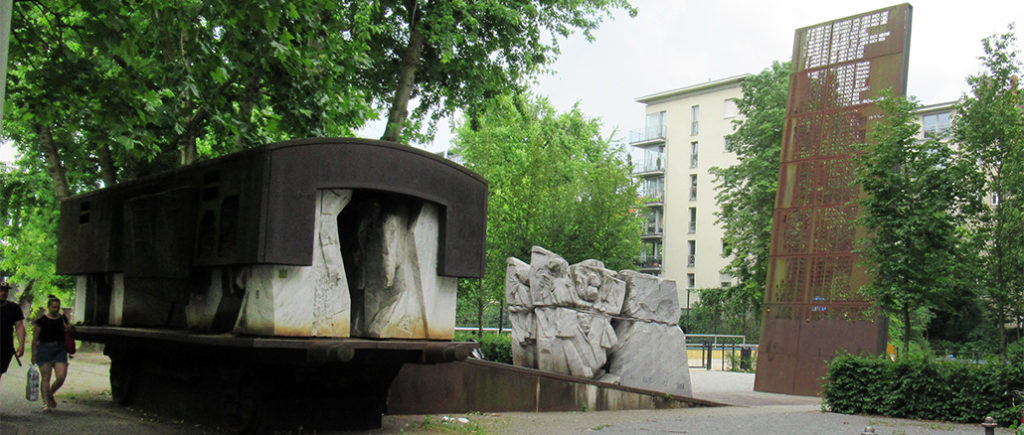
The synagogue was somewhat damaged by bombs but could have been restored after war ended. However, the District Office made demands with regard to traffic safety, which were a big problem for the Jewish community. Since most Berlin Jews had fled or been deported, the remaining community was unable to restore the building. It was finally demolished in 1955 and the plot sold to Berlin government. In its place there is now a children’s playground.
Initially, the four columns of the synagogue’s main entrance stayed in place. From today’s perspective, they would have been the ideal memorial, but they too were later demolished. In 1960, people officially remembered about this place again and set up a small memorial consisting of a brick wall where wreaths could be hung, as well as a memorial plaque, which wrongly states that the synagogue was destroyed during the November Pogroms. In fact, it was not hit badly on 9th November 1938, the serious damage happened later during the war.
In 1985, the city of Berlin decided to create a more dignified memorial. The winners of a competition, sculptor Peter Herbrich and architects Theseus Bappert and Professor Jürgen Wenzel, erected an impressive memorial. It was inaugurated on 14th November 1988, just after the 50th anniversary of the November Pogroms.
The memorial consists of several parts: The flame wall, reaching up diagonally to the sky where the main entrance used to be. It lists 63 transports to Eastern Europe that ended in ghettos, concentration camps and extermination camps.
Look at the ground: On one concrete slab, you can see the cast iron reliefs of the 34 largest synagogues in Berlin as a symbol of German Jewish culture and history, which the Nazis wanted to wipe out.
But the main part of the memorial is in the middle of the pavement: A stylised group of prisoners stands on a ramp and inside a train carriage. Two rail tracks in the pavement lead towards the East. Take a moment to let it sink in. A row of trees marks the frontage of the former synagogue. The old brick memorial wall was originally supposed to be replaced by the new monument, but the competition winners chose not to do so. Instead, they included it in their design. Today, we not only remember the crimes of the Nazi Reich, but the previous acts of remembrance also remain visible.

